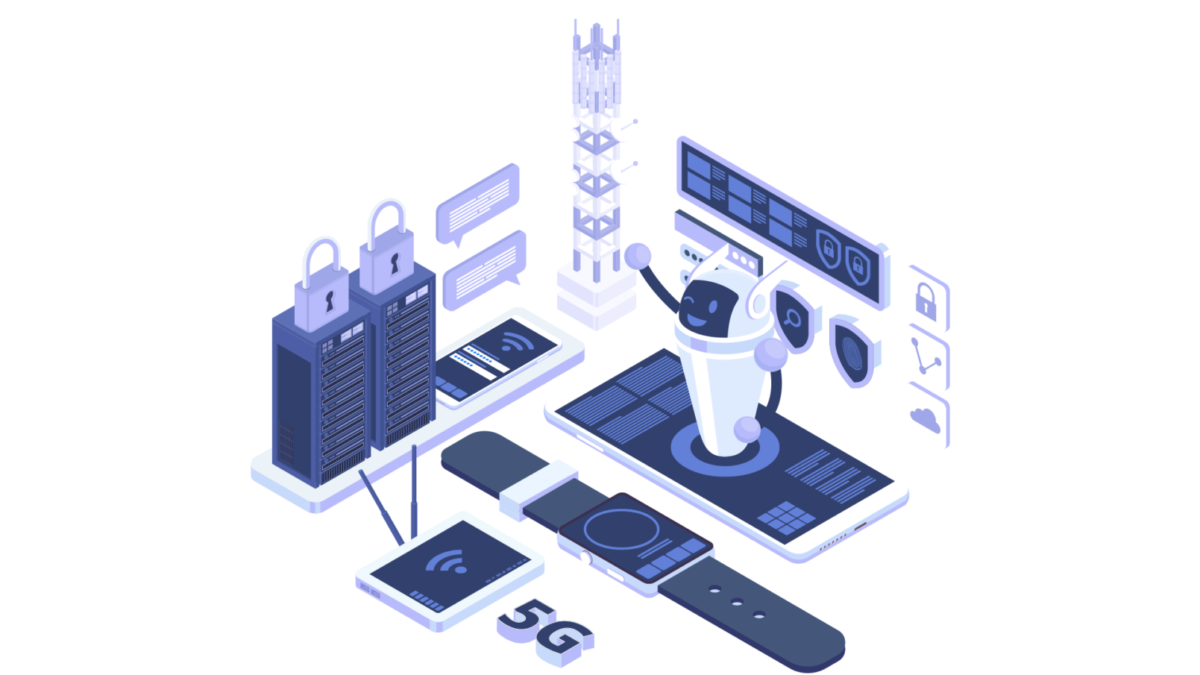
Wearable technology has had an impact on mobile app development, with its optimal and flexible support spanning a wide range of industries. The modern-day tech world has played a critical role in mobilizing today’s next-generation technologies, far exceeding the world’s expectations of what is possible.
In terms of engineering evolution, the future technology in the wearables space will have significant momentum, with limitless possibilities. According to research, by 2022, 25% of the adult population in the United States will have purchased a wearable device. These devices support multiple platforms and have a variety of user-friendly features.
Let’s take a look at some of the trends that will help to sustain this momentum:
The Internet of Things (IoT) is at the heart of these interconnected devices. It connects devices and streamlines data exchange to arrive at logical conclusions for smart living. Connectivity isn’t just another branch of the Internet of Things; it’s the primary feature that draws people to wearables in the first place. A list of IoT development services use cases in healthcare demonstrates the technology’s future potential.
The following is a list of wearable IoT devices that are being introduced by various healthcare institutions:
Retail customers are a target audience for Apple and Google products such as the iWatch and smart lenses. Samsung has IoT solutions in wearables for fleet monitoring and management, in addition to the Galaxy smartwatch. As a result, the future of IoT is inextricably linked to wearables, and app development for end-users will continue to be influenced. In order to stand out in the field, wearable app developers should incorporate IoT into their products.
Wearable apps require fewer resources than smartphones because their memory and hardware are less expensive. Consider the smartwatch app: unlike generic mobile apps, which can be overburdened with a slew of extra features, the smartwatch will stick to its core function.
The term “Internet of Things” has been rebranded as “Internet of Everything.” According to estimates by Business Intelligence companies, there will be 31 billion IoT devices on the market by 2020. They’ll generate 79 zettabytes of data if they work together.
In this cycle, the following data sources will provide the most value:
Fitness trackers, smart eyewear, and body-mounted gear generate data that allows hardware and software vendors to map consumer profiles. Wearable technology companies will be able to link up with e-commerce and digital marketplace platforms thanks to shared data ownership.
Near Field Communication, or NFC, is a technology that allows a device to communicate with assets such as credit cards, prepaid debit cards, and so on. A wearable application development company can help you with these projects from start to finish. This can assist you in developing apps that include e-payment gateways. Users can pay instantly by flashing their app on their smartwatch or smartphone against the terminal at a store.
Consumer psychology is geared toward quickness. Smartwatches offer a comprehensive experience for smartphones at a much lower cost. Smartwatches can be used as fitness trackers, as a smartphone replacement, and much more. They can receive social media notifications instantly in this age of quick interactions.
Some wearable devices also have YouTube support built in. People who are health-conscious can use a smartwatch to track their sleep, glucose levels, calories burned, stress levels, and more. As a result, the next big thing is supposed to be facilitating smartwatch interface interaction with home electronics and gadgets.
Beacons are low-power transmitters that interact with devices that are within a few metres of each other. They can communicate with nearby smart devices and send and receive data, allowing for location-based searches. It’s a collection of CPUs, a couple of batteries, and a radio when it comes to the hardware setup. Beacon devices are easy to integrate into devices like smartwatches due to their simple logistics.
In the near future, a wearable application development company can forecast measurable growth in beacon technology.
Wearable devices provide people with a boost in their standard of living in addition to the wow factor. Contactless business activities, on-demand services, immersive AR/VR experiences, IoT, and wearables have all provided compelling reasons for businesses to invest. Furthermore, as the production of wearable devices accelerates, so will the demand for app engineering. Contact BizBrolly a Business Intelligence company in Noida with its headquarters in the US, to get started with wearable app development.